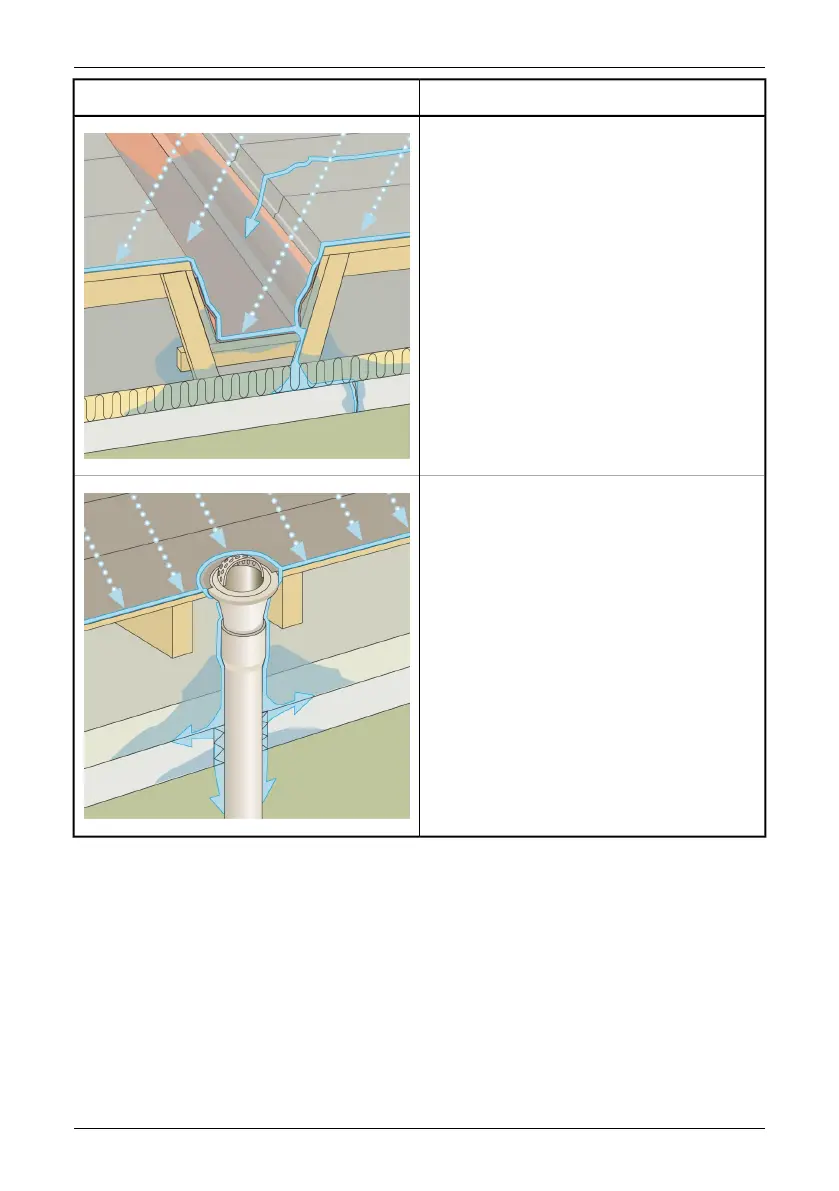CommentStructural drawing
Drainage channels located too high and with too
low an inclination. Some water will remain in the
drainage channel after rain, which may lead to local
leakage around the channel.
10553803;a2
Inadequate sealing between roof membrane and
roof outlet leading to local leakage around the roof
outlet.
10553903;a2
27.2.3.4 Commented infrared images
How do you find wet insulation below the surface of the roof? When the surface itself
is dry, including any gravel or ballast, a sunny day will warm the entire roof. Early in
the evening, if the sky is clear, the roof will begin to cool down by radiation. Because
of its higher thermal capacity the wet insulation will stay warmer longer than the dry
and will be visible in the infrared camera (see photos below). The technique is partic-
ularly effective on roofs having absorbent insulation—such as wood fiber, fiberglass,
and perlite—where thermal patterns correlate almost perfectly with moisture.
138 Publ. No. 1558792 Rev. a460 – ENGLISH (EN) – July 1, 2010
27 – Introduction to building thermography

